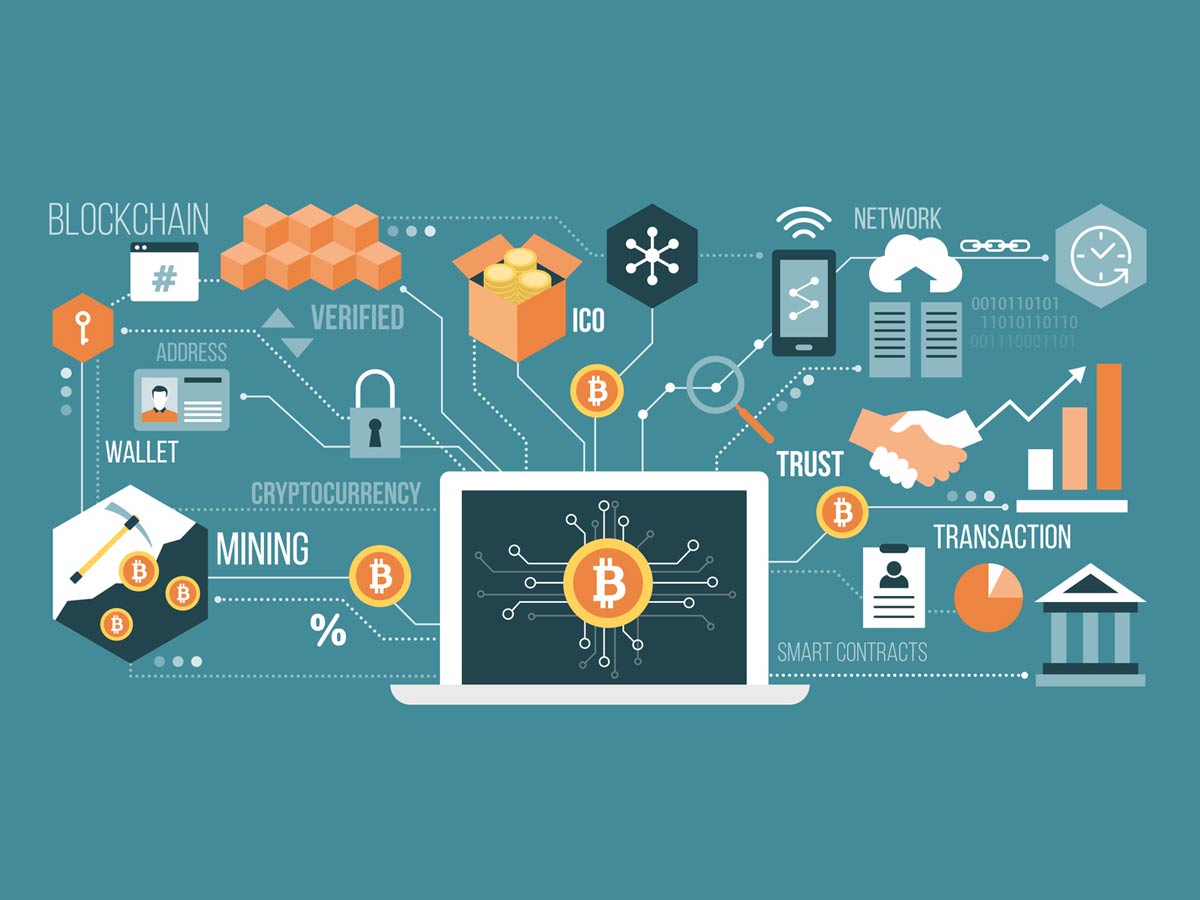Blockchain is a means of storing information so that editing, hacking, or tricking the system becomes difficult or impossible. A blockchain is essentially and significantly a digital log of activities that is duplicated and disseminated across the blockchain’s entire network of computer systems.
A blockchain is significantly a digital log or ledger of transactions copied and distributed across the whole network of computer systems that comprise the blockchain. Each block on the chain contains a collection of transactions. Whenever a new transaction occurs on the blockchain, a record of that transaction is recorded to the ledgers of all participants. Distributed Ledger Technology refers to a decentralized database administered by several individuals (DLT).
Blockchain is a distributed ledger technology in which transactions are recorded with an immutable cryptographic signature known as a hash.
What is a Blockchain

Blockchain may appear sophisticated, and it can be, but its underlying notion is actually extremely simple. A blockchain is essentially a form of a database. To understand blockchain, there is a need to understand what a database is.
What is the distinction between saving data in a spreadsheet and a database? A database is a collection of data that is saved electronically on a computer system. To enable searching and filtering for specific information, database information, or data, is frequently organized in table format.
Spreadsheets are intended for storing and accessing limited amounts of information by a single person or a small group of individuals. On the other hand, a database is intended to contain substantially larger volumes of information that can be accessed, filtered, and changed rapidly and simply by any number of users at the same time.
Large databases do this by storing data on servers comprised of powerful computers. These servers can occasionally be built with hundreds or thousands of processors to provide the computing power and storage capacity required for several users to access the database simultaneously. While a spreadsheet or database can be accessed by anybody, it is usually owned by a business and maintained by an assigned individual who has complete control over how it functions and its data.
So, what distinguishes a blockchain from a database?
Structure for Storage
The way data is structured in a standard database versus a blockchain differs dramatically. A blockchain gathers information in groupings, often known as blocks, that hold sets of data. When a block’s storage capacity is reached, it is chained onto the previously filled block, producing a data chain known as the “blockchain.” All new information that follows that newly added block is compiled into a newly formed block, then added to the chain once it is complete.
A database arranges data into tables, but a blockchain organizes and represents data into pieces (blocks) chained together. As a result, while all blockchains are databases, not all databases are blockchains. When implemented in a decentralized manner, this method creates an irreversible data timeline. When a block is finished, it is imprinted in stone and added to this timeline. When a new block is added to the chain, it is given a certain timestamp.
Decentralization
It is helpful to view blockchain from the perspective of how it has been implemented by Bitcoin to understand it. Bitcoin, like a database, requires a collection of computers to store its blockchain. This blockchain is simply a form of database that keeps every Bitcoin transaction ever made. In the case of Bitcoin, and unlike most databases, these computers are not all housed under the same roof. Each computer or group of computers is run by a distinct individual or group of individuals.
Also Read, What Is Bitcoin? Where To Buy It?
5 Benefits of Blockchain Technology
1. Transparency
Transparency is a major concern in today’s industry. Organizations have attempted to introduce more rules and laws to promote openness. However, there is one factor that prevents any system from being completely transparent: centralization.
An organization can use blockchain to create a completely decentralized network that eliminates a centralized authority, increasing the system’s transparency.
A blockchain is made up of peers who are in charge of carrying out transactions and validating them. Not every peer participates in the consensus approach. Still, they can choose whether or not to engage in the validation process.
The consensus approach is used to give validation through decentralization. Each node preserves a copy of the transaction record after it has been validated. The blockchain network handles transparency in this manner.
When it comes to organizations, transparency has far-reaching consequences. As previously said, governments can use openness to develop government processes and even conduct voting.
2. Increased Security
In comparison to previous platforms or record-keeping methods, blockchain technology employs greater security. Any transactions that are recorded must be agreed upon using the consensus technique. In addition, using a hashing algorithm, each transaction is encrypted and has a proper link to the previous transaction.
The fact that each node has a copy of every transaction conducted on the network adds another layer of security. As a result, if a malicious actor tries to modify the transaction, he will be unable to do so because other nodes will reject his request to write transactions to the network.
Blockchain networks are also immutable, which means that once data has been written, it cannot be reversed in any way. This is also the best option for systems that rely on immutable data, such as systems that monitor residents’ aging.
3. Cost Savings
Businesses are currently investing heavily to improve the management of their existing system. As a result, they want to reduce costs and reinvest the savings in developing new goods or improving existing operations.
Organizations can save money by eliminating the need for third-party vendors by utilizing blockchain. There is no need to pay vendor fees because blockchain has no inherited centralized player. Furthermore, less engagement is required while authenticating a transaction, minimizing the need to spend money or time on mundane tasks.
4. Genuine Traceability
Companies may use blockchain to focus on developing a supply chain that works with both vendors and suppliers. It is difficult to trace objects in the traditional supply chain, which can lead to various issues such as theft, counterfeiting, and loss of commodities.
The supply chain becomes more visible than ever before, thanks to blockchain. It allows each party to track the items and guarantee that they are not being replaced or mishandled during the supply chain process. Organizations can also benefit from blockchain traceability by using it inside.
5. Improved Speed and Efficiency
The final industrial benefit of blockchain is increased efficiency and speed. Blockchain eliminates time-consuming processes and automates them to increase productivity. It also eliminates human-made errors through automation.
Everything is made possible by the digital ledger, which serves as a central repository for all transactions. Process streamlining and automation also implies that everything becomes highly efficient and rapid.
Because everything is maintained on a decentralized ledger, everyone can easily trust one another. In brief, blockchain uses its own method of data storage to enable a highly efficient process characterized by trust, transparency, and immutability.
We trust that the information provided above has answered your question about the primary benefits of blockchain technology.

To offer you a better idea, let us enumerate the benefits of blockchain technology that you will receive if you use blockchain for your project.
What is the Application of Blockchain?
As we now know, blocks on Bitcoin’s blockchain record information about monetary transactions. However, blockchain has been demonstrated to be a trustworthy technique of recording data about various types of transactions.
Blockchain technology has already been embraced by Walmart, Pfizer, AIG, Siemens, Unilever, and a wave of other firms. IBM, for example, has developed its Food Trust blockchain to follow the path that food goods take to reach their destinations




























